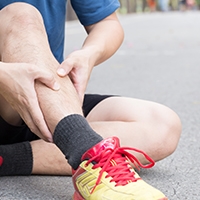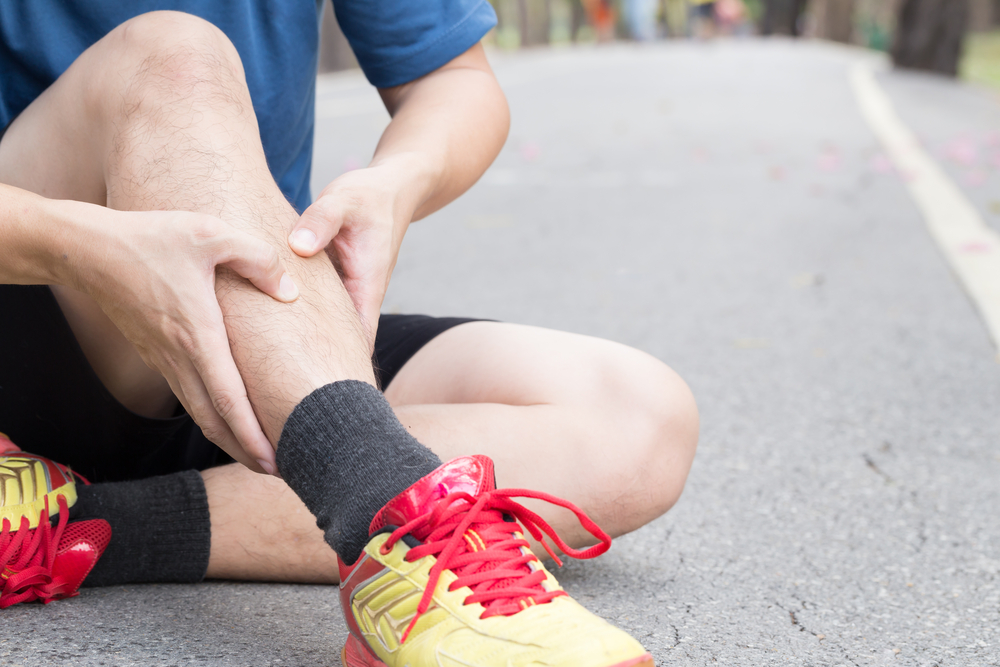
Shin splints are common problems faced primarily by runners, dancers, and military recruits, but how to prevent and treat shin splints is invaluable information for most all athletes.

What Exactly Is a Shin Splint?
Medically termed MTSS or Medial Tibial Stress Syndrome, a shin splint is pain along the shin bone, also known as the large tibia bone, which is positioned at the front of the leg. This condition frequently happens when athletes intensify or change their normal exercise or training routine causing the muscles, tendons, and bone tissue to get overworked.
Repetitive stress results in pain and soreness along the side of the shin bone, and mild swelling in the lower leg.
Typical Causes of Shin Splints
Along with the changes an athlete might make in their training routine, increasing the duration of the workout and running on hills can trigger a shin splint. In addition, having flat feet and wearing improper footwear are also risk factors not to be overlooked. Sometimes the problem may be as simple as wearing worn out shoes that need to be replaced.
Preventing Shin Splints
There are some simple changes you can make to help lower your risk for shin splints, including:
- Moderate your activity, and avoid too much running at too high an intensity. Don’t overdo it.
- Choose the right shoes. Runners should replace their shoes every 350 – 500 miles.
- Use arch supports to help prevent the pain of shin splints, especially if you have flat arches.
- Examine a formal video of your running technique. You may learn of a pattern causing shin splints, and making minor changes may decrease your risk for worsening your condition.
- Look for shock absorbing insoles to reduce symptoms and prevent any recurrence.
- Lessen possible impact by cross training to lessen stress on the shins. Try swimming or biking, but remember to start slowly and gradually increase the intensity of your workout.
- Engage in strength training to stabilize the legs, hips, ankles, and core.
At Home Treatments for Shin Splints
Once an athlete sustains a shin splint, rest is the best initial treatment. Stop the activity that caused it to flare up for at least several weeks. Substitute less impactful activities like swimming or using a stationary bike.
Use over-the-counter anti-inflammatory and non-steroidal medicines like ibuprofen and naproxen. They will help reduce swelling and relieve the pain.
Use ice on the affected shin(s) for 20 minutes several times a day, but do not place the ice directly on the skin.
Wear shoes with support and cushioning during all daily activities. We also advise you to wear a compression bandage to reduce swelling. Orthotic inserts may be helpful, particularly for those that have flat feet or recurring problems with shin splints. These inserts will help to align your ankle and foot and take stress off your leg.
After being pain free for 2 full weeks, return to exercise but with a lower level of intensity and reduced length of time.
Always remember to warm up and stretch before any type of exercise. This is one of the easiest ways to reduce risk for any type of injury, and so it should never be overlooked or understated.
Contact Ortho NY if your pain is severe or does not improve after completing the home remedies. If you would like to discuss potential treatment options that may work best for you and your lifestyle, please call (518) 489-2663. today to schedule an appointment!
